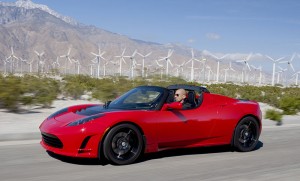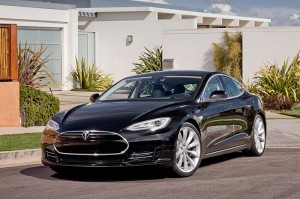Comments:"Tesla’s ingenious strategy | Maximise"
URL:http://www.maximise.dk/teslas-ingenious-strategy/
Tesla motors has huge ambitions. Tesla founder Elon Musk has said he envisions Tesla as an independent automaker, aimed at eventually mass producing fully electric cars at a price affordable to the average consumer. This is a very difficult goal to achieve for several reasons. If you want to produce cheap cars you need a finely tuned, automated and hugely expensive factory because that’s the only viable way of producing a cheap car. You also can’t expect to get it right the first time. There will always be beginners mistakes, inefficiencies, regulations, things you hadn’t thought of and all sorts of other hurdles you need to jump through before your factory is ready for primetime. Mistakes in a full car production environment are notoriously expensive.
Maybe the biggest hurdle towards producing a cheap car is conservative customers. In an interesting focus group study that Phillips did to find out what color they should make a new electric kettle they invited groups of people to come in and discuss the merits of the different colored kettles on display. There were kettles in red, blue, yellow, green, and the traditional white. Most people liked the colored ones, and praised them for their looks and fresh approach. After the study they were told that as a thank you they could pick one of the kettles to take home. Almost all of them chose the white one. People are conservative creatures. Especially when it comes to big investments, such as a car. You need a history, brand awareness, and a fleet of cars already driving the roads to make average customers pick a Tesla.
These are huge obstacles, and is probably why there hasn’t been a new major auto maker in the United States for 90 years. The fact that Tesla is making electric cars doesn’t make it easier.
Tesla’s strategy for overcoming these obstacles is ingenious; Start at the top and work our way down.
Their first car was the ubercool, expensive Roadster that goes from 0 to 100 km/hr. in less than 4 seconds. Faster than most ferraris. It comes at a base price of $109.000 which, along with the looks and performance is sure to place it firmly in the “I wish I had one of those” category.
The roadster is the first step in the grand strategy. The point isn’t to sell a lot of roadsters, it’s creating a brand. People that can afford a roadster are a minority and it will always be a niche car- Less than 2.500 have been sold to date. But since they are early adopters and thought leaders it elevates the Tesla brand from unknown to somewhere between BMW and Ferrari. Every car enthusiast worth his salt talks about the merits of the Tesla Roadster, and lots of average Joes know it exists, and that Tesla is the coolest thing that happened to cars in the last 50 years. The low production volume also gives the company a chance to learn how to run a car factory on a small scale while mistakes are still cheap to make. If 10% of the cars fail, that’s 250 cars.
The next step is the model S. With a price tag of around $50.000 (depending on which battery pack you choose) it’s still an expensive car, but with a broader appeal. Due to the lacking gasoline engine and accompanying drive shaft, gearbox and other heavy machinery it’s a very roomy family car. It’s got two baggage compartments – one in the front and one in the back. If anyone doubts the target market the baggage compartment in the back can be converted to two child seats with the children facing backwards looking out the rear window. With a broader appeal, and the brand recognition of the roadster it’s expected to sell well for a car in this price range. On January 30, 2013, it was reported that production had reached 400 per week. That’s more than 20.000 cars a year. The ramp-up in production will also teach Tesla motors how to do mass production.
This is where we are now. Notice that this is a classical Silicon Valley strategy. Start by targeting early adopters with an expensive product, knowing that this demographic will be forgiving of small glitches as long as they get the newest and coolest tech. The heavy price tag pays for your research and development, and battle-hardens your technology. This is how cell phones, flat screen TV’s and laptops are sold. Use your initial experience to iterate on processes to make the product better and cheaper. Then lower the price and grab a larger market share. Tesla is now an excellent brand, and has processes and production methods that are built from scratch and iteratively tested to deliver cost-effective cars.
Notice how, unlike many other electric cars, Tesla doesn’t primarily market their cars as electric vehicles. They know that outside a small circle of enthusiasts nobody cares whether it’s electric or not. What they care about is how it looks, how it handles, fuel economy, range and how nice it is to drive. Tesla cars look great, they’re so concerned with the finish they invented a special red paint that has extraordinary depth and shine. All their cars handle extremely well due to the low center of gravity (the heavy battery pack is located under the car), the fuel economy is good, and the range is almost as good as a gasoline fueled car. They also know that if they are to take on the giants of the car industry they need an edge. With their knowledge of electric vehicles, batteries, and electronics, and some experience in mass production of these they are well positioned for a future of electric cars. Arguably Tesla has more expertise in this area than any other car manufacturer.
The next step is to move one rung lower down the ladder with a cheaper car. This is the Bluestar with an expected price tag of $30.000 and a production schedule starting in 2015. This moves Tesla closer to the large and profitable consumer market, where cars are sold in volumes of hundres of thousands, if not millions. Eventually cheaper cars, specialised cars such as vans and trucks, and eventually self driving cars (Google is close by!) wil be produced in their Fremont production facility in California. The fact that the majority of the Tesla factory still sits empty waiting for the volume of the mass market is a sign of the ambition.
If the future of cars is electric, and a lot of things point that way, Tesla is uniquely positioned to lead the market. They have the brand, they have the technology, they have the production expertise, and they have the facilities.
If I was General Motors I would be afraid. Very afraid.
Was this post interesting? - share it!
No related posts.

